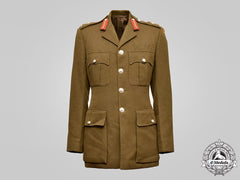
LOADING ...
In response to evolving domestic opinion, eMedals Inc has made the conscious decision to remove the presentation of German Third Reich historical artifacts from our online catalogue. For three decades, eMedals Inc has made an effort to preserve history in all its forms. As historians and researchers, we have managed sensitive articles and materials with the greatest of care and respect for their past and present social context. We acknowledge the growing sentiments put forth by the Canadian public and have taken proactive actions to address this opinion.
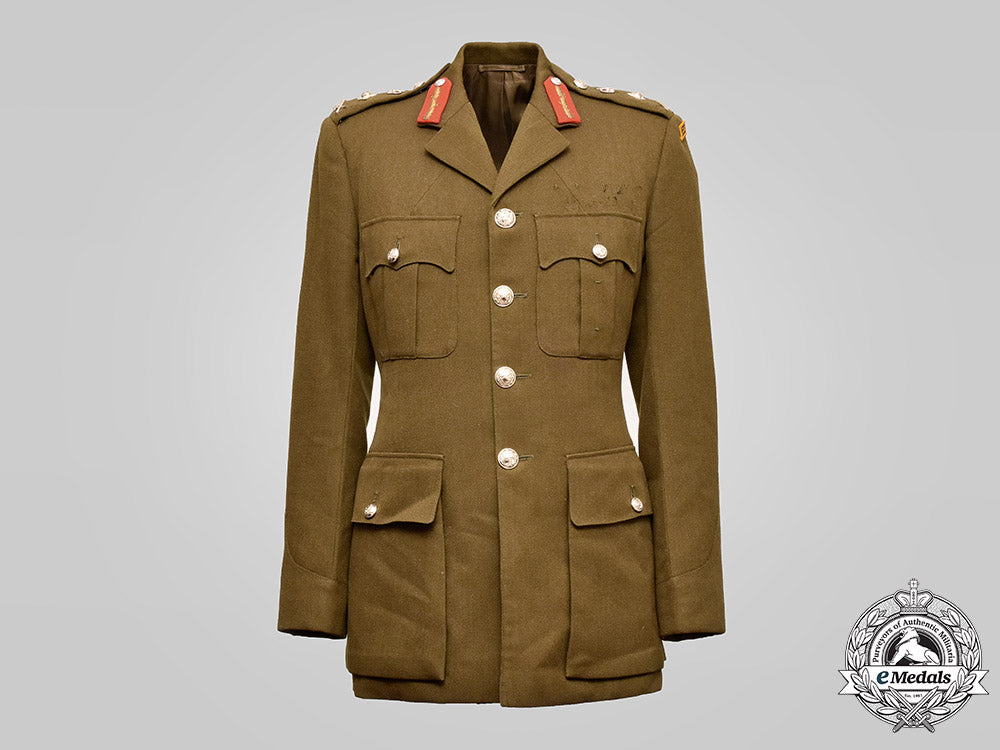
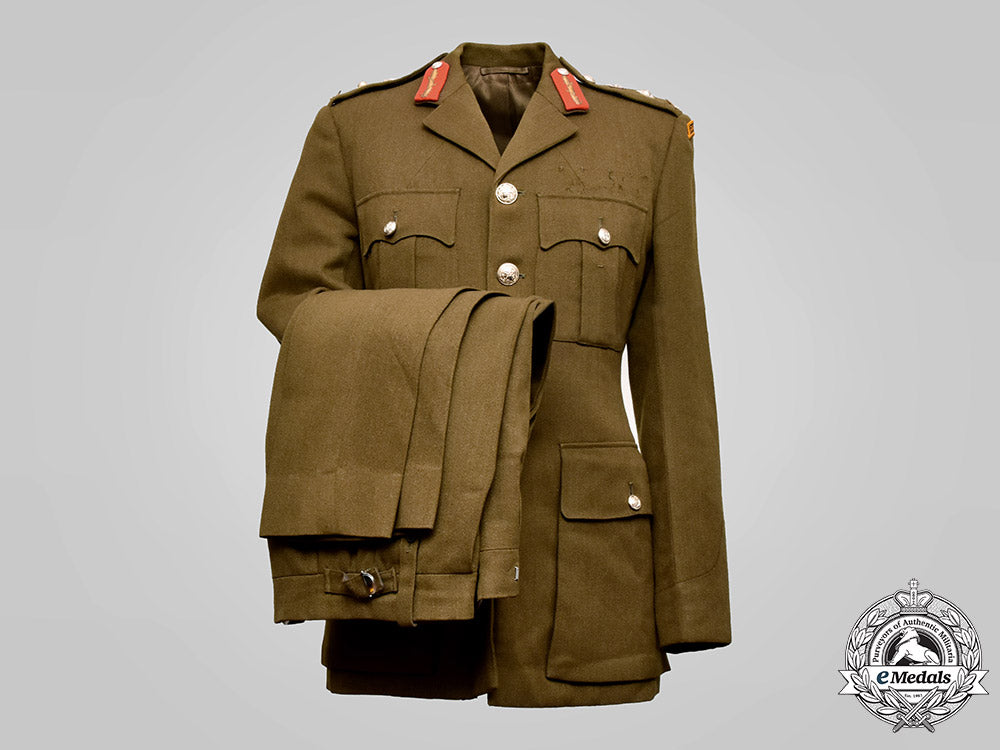
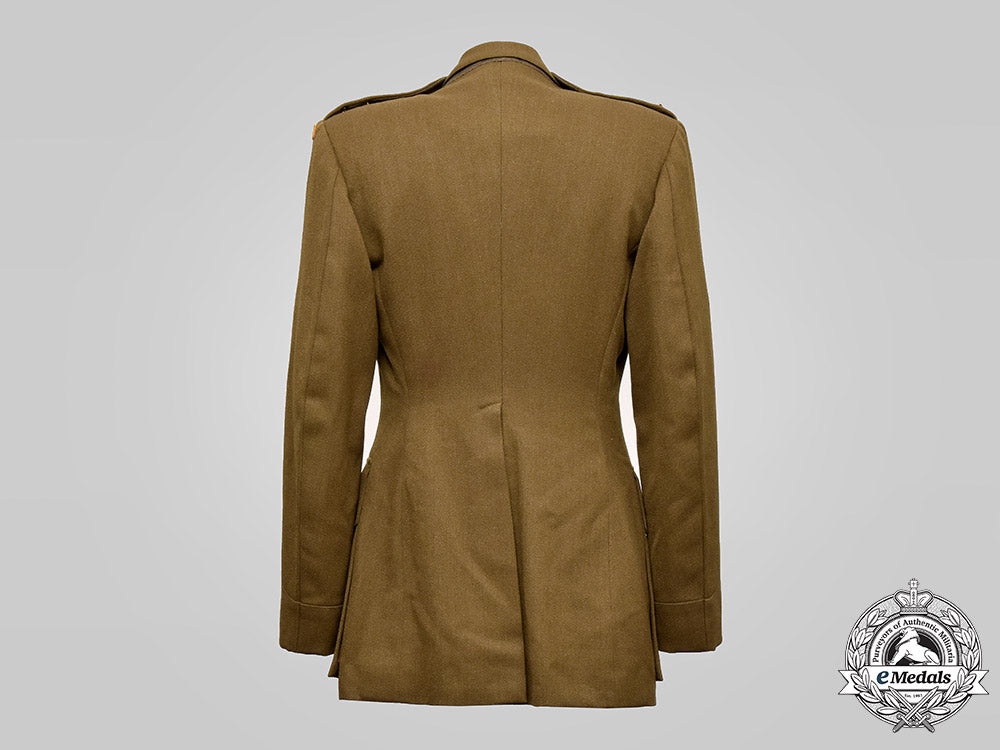
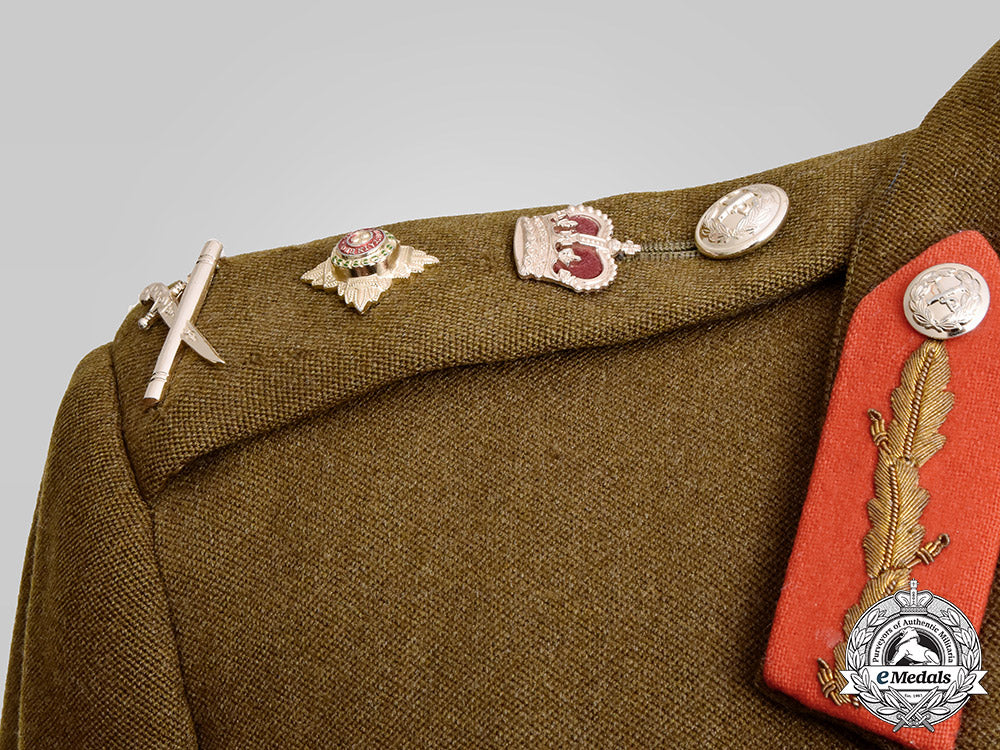
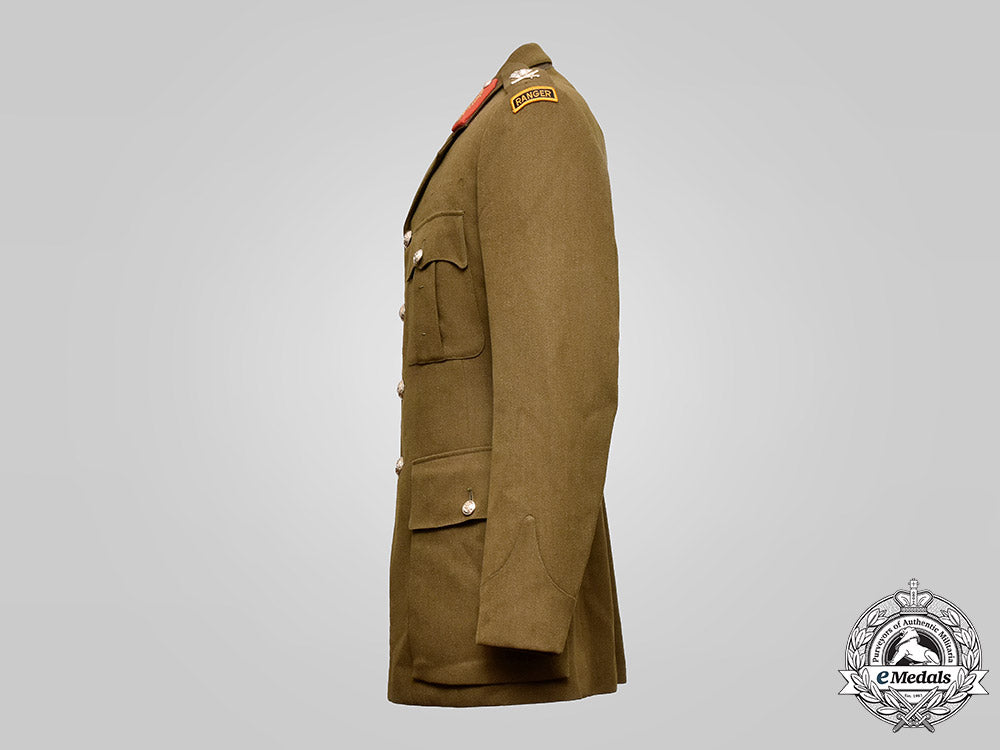
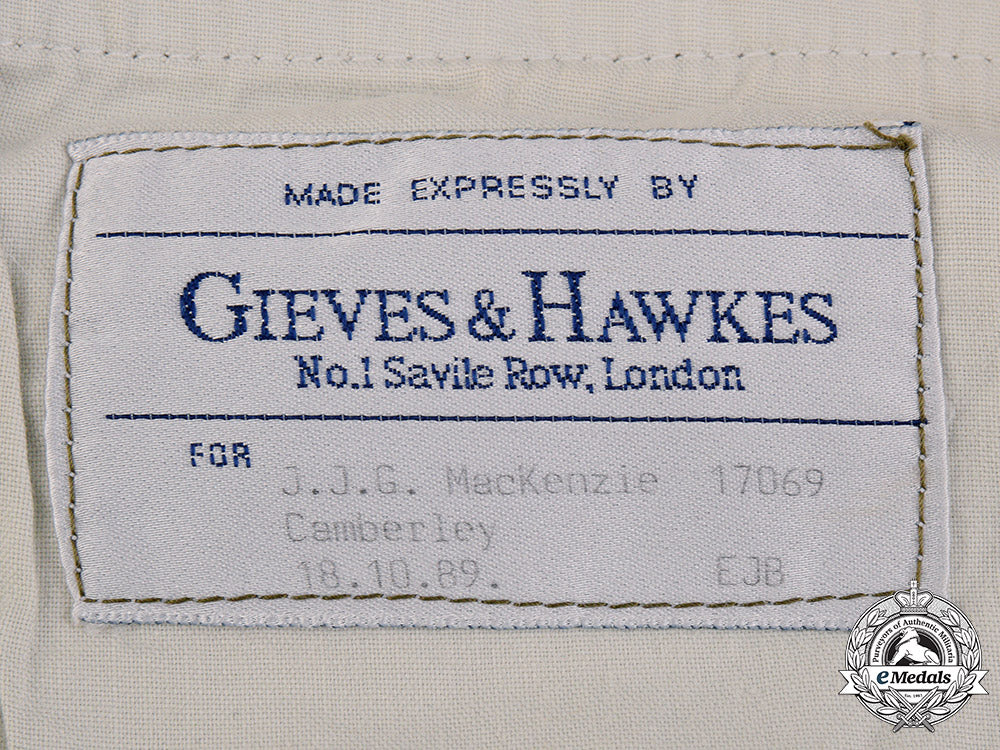
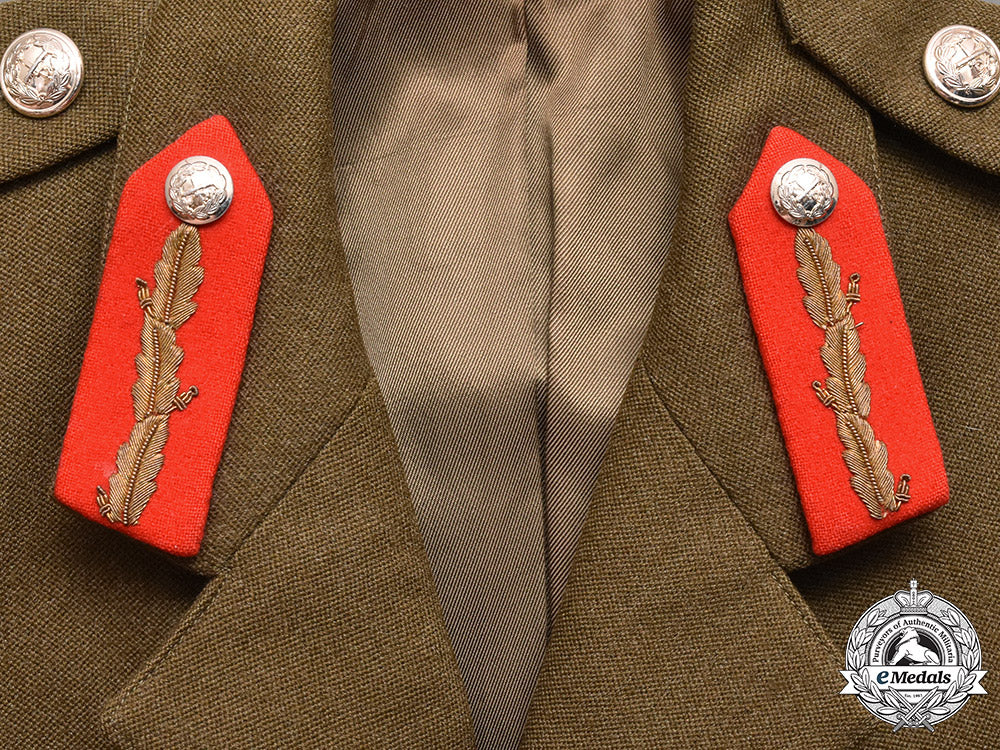
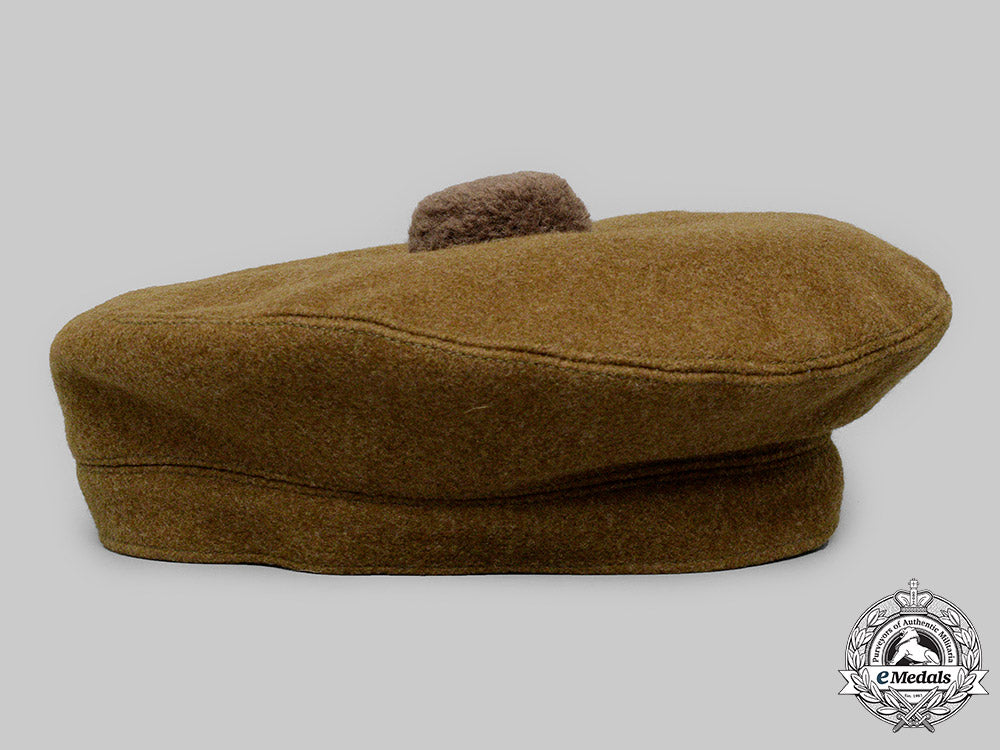
United Kingdom. The Uniform Of General Sir Jeremy Mackenzie, Gcb, Obe, Dl
United Kingdom. The Uniform Of General Sir Jeremy Mackenzie, Gcb, Obe, Dl
SKU: ITEM: GB6955
Current Bid:
Your Max Bid:
Bid History:
Time Remaining:
Couldn't load pickup availability
Shipping Details
Shipping Details
eMedals offers rapid domestic and international shipping. Orders received prior to 12:00pm (EST) will be shipped on the same business day.* Orders placed on Canadian Federal holidays will be dispatched the subsequent business day. Courier tracking numbers are provided for all shipments. All items purchased from eMedals can be returned for a full monetary refund or merchandise credit, providing the criteria presented in our Terms & Conditions are met. *Please note that the addition of a COA may impact dispatch time.
Shipping Details
eMedals offers rapid domestic and international shipping. Orders received prior to 12:00pm (EST) will be shipped on the same business day.* Orders placed on Canadian Federal holidays will be dispatched the subsequent business day. Courier tracking numbers are provided for all shipments. All items purchased from eMedals can be returned for a full monetary refund or merchandise credit, providing the criteria presented in our Terms & Conditions are met. *Please note that the addition of a COA may impact dispatch time.
Description
Description
The tunic is fabricated from an greenish-khaki wool. The shoulders straps are adorned with General's insignia, incorporating a silvered metal Queen's crown, a silvered with red and green enamelled metal pip and a silvered metal crossed baton and sword, the straps secured in place via silvered metal button, each bearing a crossed baton and sword within an open-ended wreath of laurel leaves, the buttons maker marked LONDON BADGE & BUTTON on the reverse. There are General collar tabs sewn in place on both sides of the collar at the opening, the tabs with the leafing in gold-coloured bullion wire, in various textures, on a red wool base, each with a silvered metal button bearing a crossed baton and sword within an open-ended wreath of laurel leaves. There is a black and yellow embroidered United States Army Rangers tab on the left shoulder, the tab a service school military decoration of the United States Army signifying completion of the 61-day-long Ranger School course in small-unit infantry combat tactics in woodland, mountain, and swamp operations. There are four pockets on the front, one on each breast and larger ones at the waist on both sides, each designed with a decorative pleat, a flap with a reinforced button hole and a silvered metal button bearing a crossed baton and sword within an open-ended wreath of laurel leaves, the two right side buttons maker marked C. PITT & Co Ltd LONDON. W.I. on the reverse, the two left side buttons maker marked LONDON BADGE & BUTTON on the reverse, the two breast pockets with additional dual snap closures on the underside of the flap, the right breast pocket with a functioning Parker pen marked MADE IN U.K.. There are four horizontally aligned vertical loops above the left breast pocket, where a ribbon bar once resided, the pleat on the left breast pocket with two vertically-aligned horizontal loops for the placement of an award, that has since been lost to time. The front is completed by a vertical row of four large silvered metal buttons bearing a crossed baton and sword within an open-ended wreath of laurel leaves, each of which is marked marked SMITH & WRIGHT Ltd B'HAM on the reverse. The cuffs are designed with decorative upward-pointing tips, while the rear of the tunic is single-vented. The inside is lined in olive green-khaki rayon, while the sleeves are lined in white nylon. There is a top-entry pocket sewn in place on the right breast, lined in olive green-khaki rayon, with a large silver and blue embroidered label sewn in place on the front of the pocket, with three "By Appointment" designations above the inscription GIEVES & HAWKES No.1 Savile Row, London, the underside of the pocket with a fabric-based manufacturer's label sewn in place on the right rear pocket, the label inscribed in navy blue embroidery MADE EXPRESSLY BY GIEVES & HAWKES No.1 Savile Row, London and named to J.J.G. MacKenzie 17069 / Camberley / 18.10.89. EJB (October 18, 1989) below in typewritten text, with an additional black and white embroidered label with the woolmark logo and inscribed Pure new wool. It has a olive green rayon strap in the collar for hanging the tunic on a hook and measures 480 mm across the shoulders and 810 mm in length overall.
The pants are fabricated from the same greenish-khaki wool as that used in the tunic. It is designed with a zipper fly, with two closures at the waist, a hook and eye, along with a brown plastic button and reinforced button hole combination. It has three pockets, deep side-entry pockets on both sides at the front without buttons, along with one on the rear seat with a plastic olive green button and reinforced button hole, each of the pockets lined in a white cotton/nylon blend. There is a strap travelling vertically from the waist and finishing one-third of the way down on each of the front pockets, along with a similar one on the centre rear, each strap finished with a reinforced button hole and an olive green plastic button. The rear comes with straps in olive green-khaki wool on either side at the waist, each with a non-magnetic silvered metal buckle, and when adjusted, aids in a snug fit at the waistline. Inside, the entire waist is lined in an off-white nylon panel, with one large white plastic button remaining at the rear. There is a fabric-based manufacturer's label sewn in place on the right rear pocket, the label inscribed in navy blue embroidery MADE EXPRESSLY BY GIEVES & HAWKES No.1 Savile Row, London and named to J.J.G. MacKenzie 17069 / Camberley / 18.10.89. EJB below in typewritten text. The pants measure 400 mm in width x 1,080 mm in length.
The visor cap is fabricated from the same greenish-khaki wool as the tunic and pants and designed with a traditional high peak. There is a 45 mm wide band of red wool around the circumference, two brown leather straps with smooth finished uppers and fixed loops creating the chin strap, slotted at the ends, secured on both sides by two-piece constructed brass buttons bearing a crossed baton and sword within an open-ended wreath of laurel leaves. The flat visor incorporates a thick stiffener, the upper and underside of the visor covered with the same colour wool as that used on the exterior of the cap. The front is adorned with a 44.5 mm x 58 mm General's cap badge insignia, illustrating the left-facing lion standing upon the Queen's crown, above a crossed baton and sword, framed by an open-ended wreath of laurel leaves, in gold-coloured and silvered bullion wire, in various textures, black felt behind the crossed baton and sword, maroon felt in the voided area of the crown, with touches of red threading in the lion's crown and mouth, touches of red, green and blue embroidery in the crown's base, along with black threading giving definition to the lion's eyes, the body of the lion and the crown itself. Inside, the cap has a 42 mm wide brown leather sweatband, the two ends of the sweatband tied together at the rear via a beige ribbon in a traditional bow-tie, with a strip of black velvet stitched in place to the sweatband along the front. The sides are lined in a champagne-coloured nylon, the dome covered in a gold tinted moisture-resistant shield, the underside with a fabric-based manufacturer's label sewn in place inscribed GIEVES & HAWKES No.1 Savile Row, London, the cap measuring 250 mm x 260 mm x 120 mm in height.
The beret is fabricated from a slightly lighter greenish-khaki wool as that used on the tunic, pants and visor cap, with a large brown wool toorie sewn in place on the top. There is a square tartan swatch sewn in place on the left side, bearing a General's cap badge, illustrating the left-facing lion standing upon the Queen's crown, above a crossed baton and sword, framed by an open-ended wreath of laurel leaves, in gold-coloured and silvered bullion wire, in various textures, black felt behind the crossed baton and sword, dark red felt in the voided area of the crown, with touches of red threading in the lion's crown and mouth, touches of red, green and blue embroidery in the crown's base, along with black threading giving definition to the lion's eyes, the body of the lion and the crown itself, with a strip of brown rayon sewn on the back panel where ribbons once resided. The inside is lined in olive green-khaki rayon, with a fabric-based manufacturer's label sewn in place in the dome, the label with the Royal coat-of-arms and inscribed in red embroidery BY APPOINTMENT TO H.M. THE QUEEN / MILITARY OUTFITTERS / MEYER & MORTIMER Ltd / 6, SACKVILLE ST., LONDON, W.I., sizes "7 1/8", dated "1/94" (January 1994) and named MACKENZIE in black handwritten ink, with an additional smaller embroidered label below inscribed DRY CLEAN ONLY, the beret measuring 200 mm x 230 mm x 70 mm.
A visor cap fabricated from black wool and designed with a traditional high peak. There is a 45 mm wide band of red wool around the circumference, its black patent leather chin strap having broken off, with fragments attached to the two-piece constructed brass buttons on either side, each button bearing a crossed baton and sword within an open-ended wreath of laurel leaves. The flat visor incorporates a very thick stiffener, with a patent leather upper, housing gold-coloured bullion oak leaves, in various textures, with a hunter green synthetic underside. The front is adorned with a 45 mm x 57 mm General's cap badge insignia, illustrating the left-facing lion standing upon the Queen's crown, above a crossed baton and sword, framed by an open-ended wreath of laurel leaves, in gold-coloured and silvered bullion wire, in various textures, black felt behind the crossed baton and sword, maroon felt in the voided area of the crown, with touches of red threading in the lion's crown and mouth, touches of red, green and blue threading in the crown's base, along with black threading giving definition to the lion's eyes, the body of the lion and the crown itself. Inside, the cap has a 42 mm wide brown leather sweatband, the two ends of the sweatband tied together at the rear via a beige ribbon in a traditional bow-tie, with a strip of black velvet stitched in place to the sweatband along the front. The sides and dome are lined in a red nylon, a small label inscribed in handwritten blue ink "250659 / VB 78" sewn in place to lining at the rear, the dome with a fabric-based manufacturer's label sewn in place inscribed GIEVES & HAWKES No.1 Savile Row, London, the cap measuring 245 mm x 260 mm x 110 mm in height.
Footnote: General Sir John Jeremy George Mackenzie, GCB, OBE, DL is a retired senior British Army officer who served as Deputy Supreme Allied Commander Europe from 1994 to 1998.
Mackenzie was born in Nairobi, Kenya on 11 February 1941 to parents Col. John William Elliot Mackenzie, DSO, QPM, and Valerie (nee Dawes). Colonel Mackenzie served with the King’s African Rifles and later commanded the 3rd Battalion, North Rhodesian Regiment in Burma. Jeremy Mackenzie spent his childhood in Kenya, attending and boarding at Duke of York School outside Nairobi. Later, he attended the Royal Military Academy Sandhurst.
Intending to follow in his father’s footsteps and join the Seaforths, Mackenzie’s plans were interrupted when in 1961 his father’s regiment was amalgamated with the Cameron Highlanders to form the Queen’s Own Highlanders (QOH). He was assigned to command the 3 Platoon, A Company, 1st Battalion, QOH and was soon deployed to south-east Asia where Mackenzie excelled as a platoon commander during the Borneo Confrontation with Indonesia. In November and December of 1962, 3 Platoon moved twelve times in eight weeks, putting down a coup in Brunei and engaging in a fire fight in Seria, north-west Sarawak, Borneo. They also stayed in Labi in the interior of Borneo, lodging in a longhouse during a local harvest festival.
Mackenzie worked for E Group, a special paramilitary unit reporting to the Secret Intelligence Service (SIS or M16), and lived among the tribes of Borneo for two years to counter Indonesian influence during the early and mid-1960s. From 1963 to 1965, Mackenzie’s E Group frequently conducted operations with the SAS and Special Boat Service, working in cooperation with Brigadier Harry Tuzo and the 51st Gurkha Brigade. Mackenzie was promoted to Lieutenant in 1963.
In the spring of 1972, Mackenzie n transferred to the 1 Argylls, D Company from the Queen’s Own Highlanders as acting commander. D Company arrived in Bessbrook, South Armagh in July. One platoon guarded the Battalion Headquarters camp at Bessbrook, the airfield and the RUC Station as well as providing escorts. The patrols and intelligence platoon patrolled throughout the immediate area around Bessbrook during the dat and at night snuck around the villages. Another platoon manned the main Dublin road vehicle checkpoint, searching cars and clearing roads for improvised explosive devices. They were also responsible for helicopter patrols. In total, D Company searched 25,611 vehicles during its four-month tour of South Armagh and South Down, finding 600 lb of explosives, including one remote-controlled 200 lb and a 300 lb car bomb.
In 1973, Mackenzie received the promotion from Captain to Major in December, and in 1979, to Lieutenant-Colonel. He was then second-in-command of the QOH in South Armagh, being obliged to take command when the commanding officer was killed in the Warrenpoint ambush.
From 1980 to 1981, Mackenzie held the command for the 1st Battalion Queen’s Own Highlanders in Hong Kong and was appointed an Officer of the Order of the British Empire. He then spent several years as an instructor at the Army Staff College, Camberley and served on the Staff at the Ministry of Defence as a colonel. In 1984, Mackenzie was promoted to Colonel and, later, promoted brigadier and made Commander of the 12th Armoured Brigade. Later, made Commandant of the Staff College, Camberley. At the end of 1989, Mackenzie was made major general and General Officer Commanding 4th Armoured Division.
In November 1991, Mackenzie was appointed Commander 1st (British) Corps and is granted the acting rank of Lieutenant-General (promoted to the substantive rank on 14 January 1992, with seniority since June 1991). He was knighted as a Knight Commander of the Order of the Bath in December 1991.
In 1992, Mackenzie formed the Allied Command Europe Rapid Reaction Corps and became its first Commander. The end of the Cold War, in addition to events in Yugoslavia, Moldova, and Kuwait, indicated a need to establish a sizable force capable of deploying and responding to crises with speed. The British proposed the creation of a rapid reaction corps, adopting a multinational flavour that would allow expertise and relevance to be maximized, while maintaining the deterrent and unity effects of Alliance armed forces standing together. Initially called the Allied Command Europe Rapid Reaction Corps, the AARC was born in 1992 in Bielefeld, Germany.
In 1994, he was promoted full general and given the post of Deputy Supreme Allied Commander Europe with special responsibilities for the Partnership for Peace Program and the Expansion of NATO, and responsible for coordinating 52,000 troops from 34 nations who moved into Bosnia and Herzegovina. He was also given the colonelcy of the Highlanders (Seaforth, Gordons, and Camerons) from 1994 to 2001.
In 1997, Mackenzie is appointed Colonel Commandant Army Physical Training Corps in succession to Field Marshal Sir Peter Inge. Soon after, he was appointed Aide de Camp General to The Queen on 17 March 1997. He was made a Knight Grand Cross of the Order of the Bath in 1999, having previously received the U.S. Legion of Merit twice in 1997 and 1999, the Czech Republic’s Cross of Merit First Class, and the Officer’s Cross of the Order of Merit of the Republic of Hungary in 1998.
Description
The tunic is fabricated from an greenish-khaki wool. The shoulders straps are adorned with General's insignia, incorporating a silvered metal Queen's crown, a silvered with red and green enamelled metal pip and a silvered metal crossed baton and sword, the straps secured in place via silvered metal button, each bearing a crossed baton and sword within an open-ended wreath of laurel leaves, the buttons maker marked LONDON BADGE & BUTTON on the reverse. There are General collar tabs sewn in place on both sides of the collar at the opening, the tabs with the leafing in gold-coloured bullion wire, in various textures, on a red wool base, each with a silvered metal button bearing a crossed baton and sword within an open-ended wreath of laurel leaves. There is a black and yellow embroidered United States Army Rangers tab on the left shoulder, the tab a service school military decoration of the United States Army signifying completion of the 61-day-long Ranger School course in small-unit infantry combat tactics in woodland, mountain, and swamp operations. There are four pockets on the front, one on each breast and larger ones at the waist on both sides, each designed with a decorative pleat, a flap with a reinforced button hole and a silvered metal button bearing a crossed baton and sword within an open-ended wreath of laurel leaves, the two right side buttons maker marked C. PITT & Co Ltd LONDON. W.I. on the reverse, the two left side buttons maker marked LONDON BADGE & BUTTON on the reverse, the two breast pockets with additional dual snap closures on the underside of the flap, the right breast pocket with a functioning Parker pen marked MADE IN U.K.. There are four horizontally aligned vertical loops above the left breast pocket, where a ribbon bar once resided, the pleat on the left breast pocket with two vertically-aligned horizontal loops for the placement of an award, that has since been lost to time. The front is completed by a vertical row of four large silvered metal buttons bearing a crossed baton and sword within an open-ended wreath of laurel leaves, each of which is marked marked SMITH & WRIGHT Ltd B'HAM on the reverse. The cuffs are designed with decorative upward-pointing tips, while the rear of the tunic is single-vented. The inside is lined in olive green-khaki rayon, while the sleeves are lined in white nylon. There is a top-entry pocket sewn in place on the right breast, lined in olive green-khaki rayon, with a large silver and blue embroidered label sewn in place on the front of the pocket, with three "By Appointment" designations above the inscription GIEVES & HAWKES No.1 Savile Row, London, the underside of the pocket with a fabric-based manufacturer's label sewn in place on the right rear pocket, the label inscribed in navy blue embroidery MADE EXPRESSLY BY GIEVES & HAWKES No.1 Savile Row, London and named to J.J.G. MacKenzie 17069 / Camberley / 18.10.89. EJB (October 18, 1989) below in typewritten text, with an additional black and white embroidered label with the woolmark logo and inscribed Pure new wool. It has a olive green rayon strap in the collar for hanging the tunic on a hook and measures 480 mm across the shoulders and 810 mm in length overall.
The pants are fabricated from the same greenish-khaki wool as that used in the tunic. It is designed with a zipper fly, with two closures at the waist, a hook and eye, along with a brown plastic button and reinforced button hole combination. It has three pockets, deep side-entry pockets on both sides at the front without buttons, along with one on the rear seat with a plastic olive green button and reinforced button hole, each of the pockets lined in a white cotton/nylon blend. There is a strap travelling vertically from the waist and finishing one-third of the way down on each of the front pockets, along with a similar one on the centre rear, each strap finished with a reinforced button hole and an olive green plastic button. The rear comes with straps in olive green-khaki wool on either side at the waist, each with a non-magnetic silvered metal buckle, and when adjusted, aids in a snug fit at the waistline. Inside, the entire waist is lined in an off-white nylon panel, with one large white plastic button remaining at the rear. There is a fabric-based manufacturer's label sewn in place on the right rear pocket, the label inscribed in navy blue embroidery MADE EXPRESSLY BY GIEVES & HAWKES No.1 Savile Row, London and named to J.J.G. MacKenzie 17069 / Camberley / 18.10.89. EJB below in typewritten text. The pants measure 400 mm in width x 1,080 mm in length.
The visor cap is fabricated from the same greenish-khaki wool as the tunic and pants and designed with a traditional high peak. There is a 45 mm wide band of red wool around the circumference, two brown leather straps with smooth finished uppers and fixed loops creating the chin strap, slotted at the ends, secured on both sides by two-piece constructed brass buttons bearing a crossed baton and sword within an open-ended wreath of laurel leaves. The flat visor incorporates a thick stiffener, the upper and underside of the visor covered with the same colour wool as that used on the exterior of the cap. The front is adorned with a 44.5 mm x 58 mm General's cap badge insignia, illustrating the left-facing lion standing upon the Queen's crown, above a crossed baton and sword, framed by an open-ended wreath of laurel leaves, in gold-coloured and silvered bullion wire, in various textures, black felt behind the crossed baton and sword, maroon felt in the voided area of the crown, with touches of red threading in the lion's crown and mouth, touches of red, green and blue embroidery in the crown's base, along with black threading giving definition to the lion's eyes, the body of the lion and the crown itself. Inside, the cap has a 42 mm wide brown leather sweatband, the two ends of the sweatband tied together at the rear via a beige ribbon in a traditional bow-tie, with a strip of black velvet stitched in place to the sweatband along the front. The sides are lined in a champagne-coloured nylon, the dome covered in a gold tinted moisture-resistant shield, the underside with a fabric-based manufacturer's label sewn in place inscribed GIEVES & HAWKES No.1 Savile Row, London, the cap measuring 250 mm x 260 mm x 120 mm in height.
The beret is fabricated from a slightly lighter greenish-khaki wool as that used on the tunic, pants and visor cap, with a large brown wool toorie sewn in place on the top. There is a square tartan swatch sewn in place on the left side, bearing a General's cap badge, illustrating the left-facing lion standing upon the Queen's crown, above a crossed baton and sword, framed by an open-ended wreath of laurel leaves, in gold-coloured and silvered bullion wire, in various textures, black felt behind the crossed baton and sword, dark red felt in the voided area of the crown, with touches of red threading in the lion's crown and mouth, touches of red, green and blue embroidery in the crown's base, along with black threading giving definition to the lion's eyes, the body of the lion and the crown itself, with a strip of brown rayon sewn on the back panel where ribbons once resided. The inside is lined in olive green-khaki rayon, with a fabric-based manufacturer's label sewn in place in the dome, the label with the Royal coat-of-arms and inscribed in red embroidery BY APPOINTMENT TO H.M. THE QUEEN / MILITARY OUTFITTERS / MEYER & MORTIMER Ltd / 6, SACKVILLE ST., LONDON, W.I., sizes "7 1/8", dated "1/94" (January 1994) and named MACKENZIE in black handwritten ink, with an additional smaller embroidered label below inscribed DRY CLEAN ONLY, the beret measuring 200 mm x 230 mm x 70 mm.
A visor cap fabricated from black wool and designed with a traditional high peak. There is a 45 mm wide band of red wool around the circumference, its black patent leather chin strap having broken off, with fragments attached to the two-piece constructed brass buttons on either side, each button bearing a crossed baton and sword within an open-ended wreath of laurel leaves. The flat visor incorporates a very thick stiffener, with a patent leather upper, housing gold-coloured bullion oak leaves, in various textures, with a hunter green synthetic underside. The front is adorned with a 45 mm x 57 mm General's cap badge insignia, illustrating the left-facing lion standing upon the Queen's crown, above a crossed baton and sword, framed by an open-ended wreath of laurel leaves, in gold-coloured and silvered bullion wire, in various textures, black felt behind the crossed baton and sword, maroon felt in the voided area of the crown, with touches of red threading in the lion's crown and mouth, touches of red, green and blue threading in the crown's base, along with black threading giving definition to the lion's eyes, the body of the lion and the crown itself. Inside, the cap has a 42 mm wide brown leather sweatband, the two ends of the sweatband tied together at the rear via a beige ribbon in a traditional bow-tie, with a strip of black velvet stitched in place to the sweatband along the front. The sides and dome are lined in a red nylon, a small label inscribed in handwritten blue ink "250659 / VB 78" sewn in place to lining at the rear, the dome with a fabric-based manufacturer's label sewn in place inscribed GIEVES & HAWKES No.1 Savile Row, London, the cap measuring 245 mm x 260 mm x 110 mm in height.
Footnote: General Sir John Jeremy George Mackenzie, GCB, OBE, DL is a retired senior British Army officer who served as Deputy Supreme Allied Commander Europe from 1994 to 1998.
Mackenzie was born in Nairobi, Kenya on 11 February 1941 to parents Col. John William Elliot Mackenzie, DSO, QPM, and Valerie (nee Dawes). Colonel Mackenzie served with the King’s African Rifles and later commanded the 3rd Battalion, North Rhodesian Regiment in Burma. Jeremy Mackenzie spent his childhood in Kenya, attending and boarding at Duke of York School outside Nairobi. Later, he attended the Royal Military Academy Sandhurst.
Intending to follow in his father’s footsteps and join the Seaforths, Mackenzie’s plans were interrupted when in 1961 his father’s regiment was amalgamated with the Cameron Highlanders to form the Queen’s Own Highlanders (QOH). He was assigned to command the 3 Platoon, A Company, 1st Battalion, QOH and was soon deployed to south-east Asia where Mackenzie excelled as a platoon commander during the Borneo Confrontation with Indonesia. In November and December of 1962, 3 Platoon moved twelve times in eight weeks, putting down a coup in Brunei and engaging in a fire fight in Seria, north-west Sarawak, Borneo. They also stayed in Labi in the interior of Borneo, lodging in a longhouse during a local harvest festival.
Mackenzie worked for E Group, a special paramilitary unit reporting to the Secret Intelligence Service (SIS or M16), and lived among the tribes of Borneo for two years to counter Indonesian influence during the early and mid-1960s. From 1963 to 1965, Mackenzie’s E Group frequently conducted operations with the SAS and Special Boat Service, working in cooperation with Brigadier Harry Tuzo and the 51st Gurkha Brigade. Mackenzie was promoted to Lieutenant in 1963.
In the spring of 1972, Mackenzie n transferred to the 1 Argylls, D Company from the Queen’s Own Highlanders as acting commander. D Company arrived in Bessbrook, South Armagh in July. One platoon guarded the Battalion Headquarters camp at Bessbrook, the airfield and the RUC Station as well as providing escorts. The patrols and intelligence platoon patrolled throughout the immediate area around Bessbrook during the dat and at night snuck around the villages. Another platoon manned the main Dublin road vehicle checkpoint, searching cars and clearing roads for improvised explosive devices. They were also responsible for helicopter patrols. In total, D Company searched 25,611 vehicles during its four-month tour of South Armagh and South Down, finding 600 lb of explosives, including one remote-controlled 200 lb and a 300 lb car bomb.
In 1973, Mackenzie received the promotion from Captain to Major in December, and in 1979, to Lieutenant-Colonel. He was then second-in-command of the QOH in South Armagh, being obliged to take command when the commanding officer was killed in the Warrenpoint ambush.
From 1980 to 1981, Mackenzie held the command for the 1st Battalion Queen’s Own Highlanders in Hong Kong and was appointed an Officer of the Order of the British Empire. He then spent several years as an instructor at the Army Staff College, Camberley and served on the Staff at the Ministry of Defence as a colonel. In 1984, Mackenzie was promoted to Colonel and, later, promoted brigadier and made Commander of the 12th Armoured Brigade. Later, made Commandant of the Staff College, Camberley. At the end of 1989, Mackenzie was made major general and General Officer Commanding 4th Armoured Division.
In November 1991, Mackenzie was appointed Commander 1st (British) Corps and is granted the acting rank of Lieutenant-General (promoted to the substantive rank on 14 January 1992, with seniority since June 1991). He was knighted as a Knight Commander of the Order of the Bath in December 1991.
In 1992, Mackenzie formed the Allied Command Europe Rapid Reaction Corps and became its first Commander. The end of the Cold War, in addition to events in Yugoslavia, Moldova, and Kuwait, indicated a need to establish a sizable force capable of deploying and responding to crises with speed. The British proposed the creation of a rapid reaction corps, adopting a multinational flavour that would allow expertise and relevance to be maximized, while maintaining the deterrent and unity effects of Alliance armed forces standing together. Initially called the Allied Command Europe Rapid Reaction Corps, the AARC was born in 1992 in Bielefeld, Germany.
In 1994, he was promoted full general and given the post of Deputy Supreme Allied Commander Europe with special responsibilities for the Partnership for Peace Program and the Expansion of NATO, and responsible for coordinating 52,000 troops from 34 nations who moved into Bosnia and Herzegovina. He was also given the colonelcy of the Highlanders (Seaforth, Gordons, and Camerons) from 1994 to 2001.
In 1997, Mackenzie is appointed Colonel Commandant Army Physical Training Corps in succession to Field Marshal Sir Peter Inge. Soon after, he was appointed Aide de Camp General to The Queen on 17 March 1997. He was made a Knight Grand Cross of the Order of the Bath in 1999, having previously received the U.S. Legion of Merit twice in 1997 and 1999, the Czech Republic’s Cross of Merit First Class, and the Officer’s Cross of the Order of Merit of the Republic of Hungary in 1998.








You May Also Like
Germany, Third Reich. A Mixed Lot of Tyrolean Marksmanship Badges
G52930
Germany, SS. An Estonian Waffen-SS Volunteer’s Sleeve Shield
G50381
Germany, SS. A Waffen-SS Sturmmann Sleeve Insignia
G52846
Germany, Third Reich; Slovakia, First Republic. A Mixed Lot of Wartime Postcards
G52905
Germany, Third Reich. A Pair of Tyrolean Marksmanship Badges
G52981
-
Germany, Third Reich. A Mixed Lot of Tyrolean Marksmanship Badges
G52930
Add to CartRegular price $135 USDRegular price $0 USD Sale price $135 USDUnit price / per -
Germany, SS. An Estonian Waffen-SS Volunteer’s Sleeve Shield
G50381
Add to CartRegular price $150 USDRegular price $0 USD Sale price $150 USDUnit price / per -
Germany, SS. A Waffen-SS Sturmmann Sleeve Insignia
G52846
Add to CartRegular price $135 USDRegular price $0 USD Sale price $135 USDUnit price / per -
Germany, Third Reich; Slovakia, First Republic. A Mixed Lot of Wartime Postcards
G52905
Add to CartRegular price $135 USDRegular price $0 USD Sale price $135 USDUnit price / per -
Germany, Third Reich. A Pair of Tyrolean Marksmanship Badges
G52981
Add to CartRegular price $135 USDRegular price $0 USD Sale price $135 USDUnit price / per
Do you have a similar item you are interested in selling?
Please complete the form and our client care representatives will contact you.
Sell Item




















